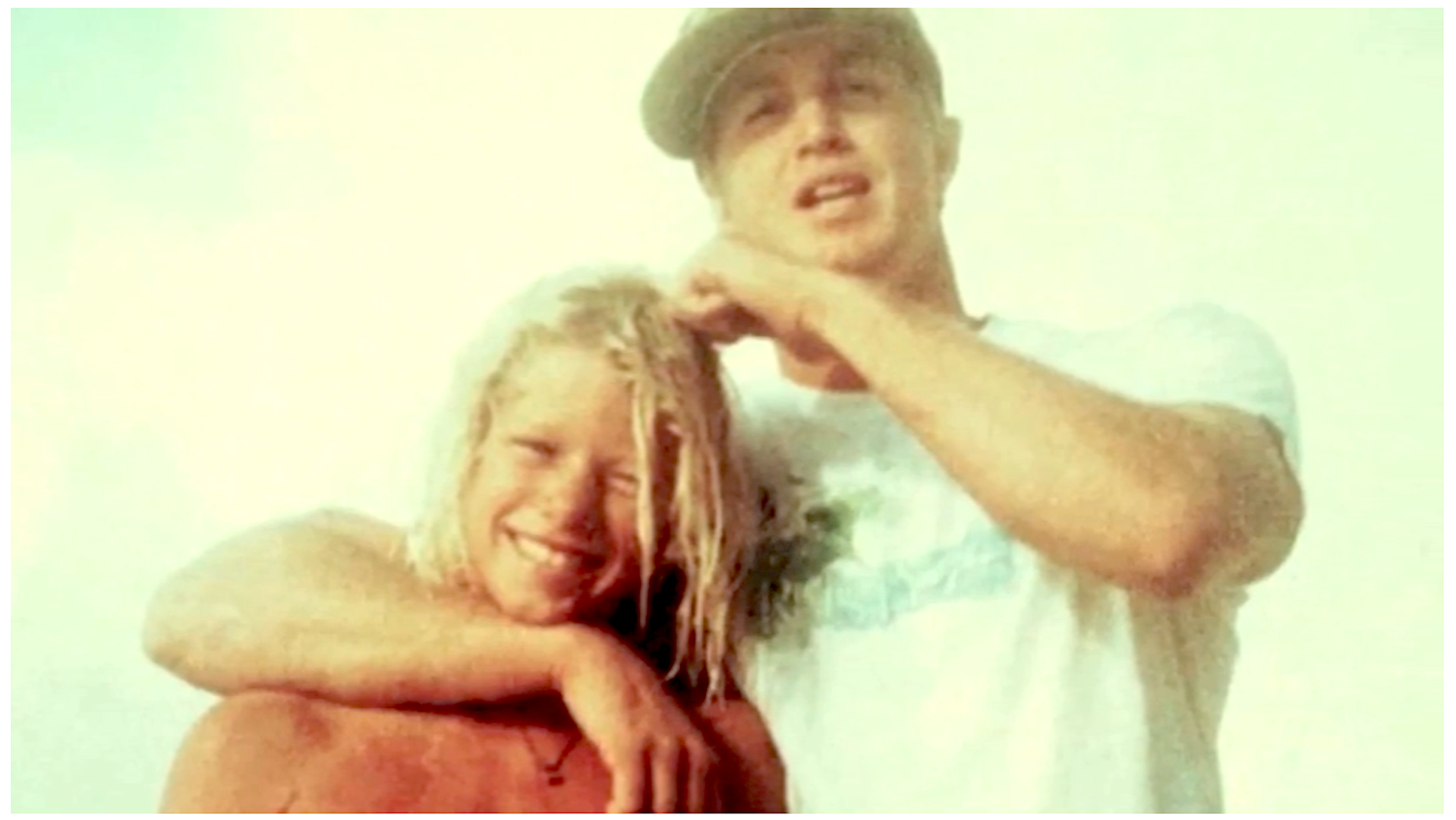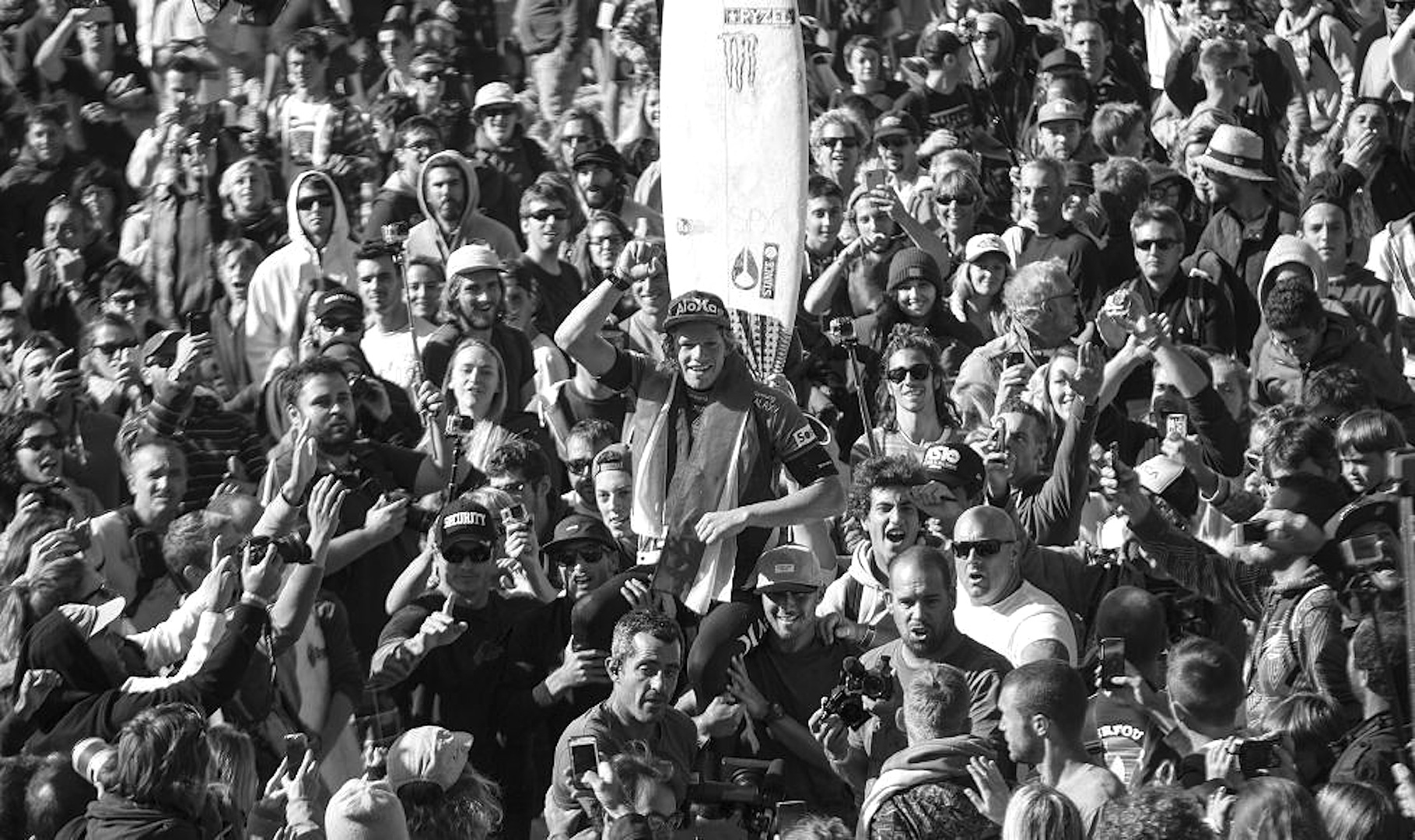To hell with cry-babies Jeter and Lebron! Matt "Mayhem" Biolos on the miracle of the ASP…
The ASP has put together the most dynamic, ever-changing, globally diverse group of athletes, with the widest age group, in the most elite field of competitors of any organised sport in the world today.
The tour is that good. Let me explain.
This year I decided to focus more on my work with athletes on the world tour. That means travelling more to the events rather than just sitting here at Trestles all year waiting for the US Open and The Hurley Pro.
The first stop was Snapper. Then I went to Rio for the Brazil event. I dragged my entire family of six to South Africa for the Ballito Prime and the J-Bay Pro. Back home for the US Open at HB and, of course, we settled in for the Hurley Pro at my home break of Lowers.
In September, we loaded up the four kids and hit the road to Europe for the Roxy and Quik Pro in Hossegor. This made for five men’s world tour events and, with HB being a CT for the girls, five women’s events that I attended in person. When you watch that many events up close you start to really realise the scope of this tour and the challenges it puts on these elite athletes.
And this is without even being at the South Pacific events which are the heaviest waves on the schedule.
And what about France? What these guys do is paddle out in what is essentially impossible-to-paddle-out-to, closed-out wash-throughs in low-tide beachbreaks that were enough to drown Lebron James and send Derek Jeter crying to Mariah Carey.
But what of the qualifying series? When you watch a few of the bigger events like the Mr Price Ballito or the US Open you realise that of the 100 or so athletes in these events only a handful have a chance to qualify. Meaning only a handful look good enough.
Even more telling is that of the yearly qualifiers. Many don’t look like they could compete at the level required to make it on the world tour anyway. It’s just so elite. It’s becoming a tour of super freaks. I cant think of anything else like it except maybe the genetic curios of sprinting.
I love the the global-ness of the tour. Other tours travel the world but a tennis court is man-made, golf courses are man-made, even downhill ski races are on tracks cut out of the mountain and groomed by tractors.
The ever-changing playing field in surfing is like no other. No other sport is so intertwined with nature. The variety of the waves on tour are impressive and can be even more diverse with a few tweaks. Bring back a slab like Chile or The Box. Maybe a radical cold-water expedition or a truly big-wave spot.
The humanity of the pro tour is also something that lights up every town it stops at. The tour surfers are very visible and for a couple weeks each year become pert of the fabric of the community. Pro surfers are everywhere: the coffee shops, bars, restaurants, and most importantly for our little culture to thrive, the surf spots. Every day, the guys and girls are out searching and surfing the local breaks. Not just the contest peak but all over. This is exciting and inspires the local kids and adult surfers alike.
In what other sport can you interact with the world’s best while they warm-up or practise for the next heat? Split a peak with Slater at Lowers? Priceless. You want to chat with Jordy between sets at J-Bay? Just paddle up and ask “Howzit?”
That point is also a double-edged sword. It’s the only sport I can think of where the athletes don’t have a closed-off, designated place to warm-up or practise. Six am, contest day, Trestles and Gabe Medina wants to warm up a little. There are 80 of his closest friends waiting to greet and compete with him for waves. It’s just not like that in any other sport.
And what about the dramatic age differences? For a man-on-man sport of high athletic demand, it’s got to be the most diverse age group going. Sure, there are specialists in various team sports who can remain valuable to a team into their mid 40’s. And surely some golfers can stay competitive pretty long in the tooth, but can you imagine an Olympic gymnast or ATP tennis player competing at a top level over 35, even 40. It doesn’t happen.
As for the webcasts, these are the single most unifying thing in the global surf community today. You can be on a beach on Bondi or Dubai, Trestles or Tel Aviv, and have the same conversation with the local surfers about the intricacies of a wave or heat or score for any one of these tour athletes.
We don’t all watch every little freesurf web edit that gets whipped up and drops on the internet at an alarming rate, but (especially with heats on demand, replays, and the highlight reels) more than any other time in the sports history, it seems like everyone is watching these events.
The presentations are slick, the announcers are doing a good job, and the back-end productions are solid. Honestly, its an incredible product they are giving us.
But lest the ASP should get any ideas about pay-per-view, listen: the broadcasts have to remain free. I mean, we don’t pay to watch Monday Night Football or the Baseball or NBA playoffs. Why should we need to pay to watch our surfing? The sponsors are paying to “Present” as in a Christmas Present, right?
Now if they could have just not made that godforsaken name change…







